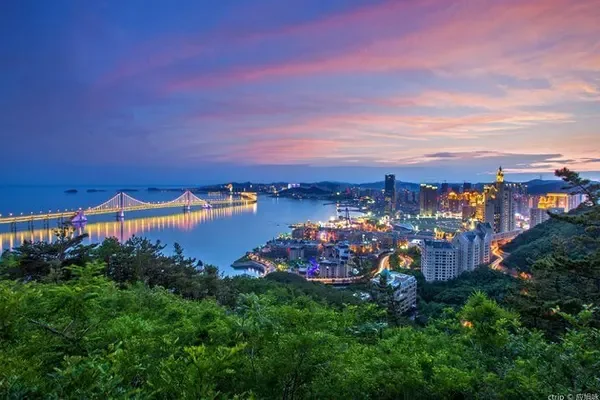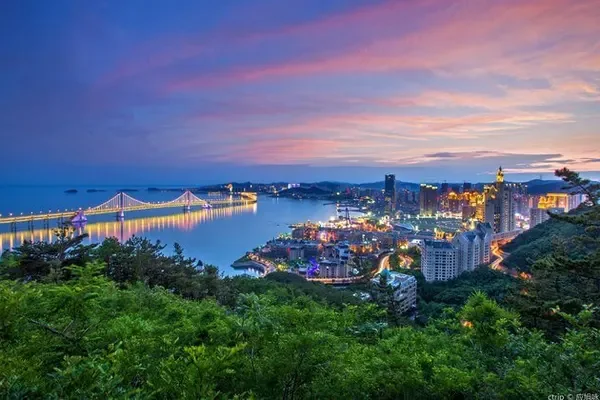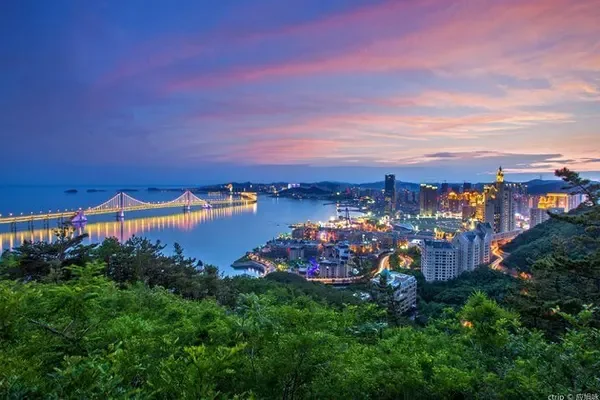Walk into Baigongfang, Dongcheng District, and explore the production experience of "Rabbit Master"
Walk into the first domestic intangible cultural heritage themed cultural and creative park "Ying Garden"
Go to the Dongyuan Theater at the foot of the imperial city to experience afternoon tea
Ride to Wangfujing from Donghuamen in the evening
To appreciate the charm of the east of the Forbidden City, looking for the most authentic taste of Beijing

Baigongfang: Inheriting hundreds of years of handicraft skills, it is an intangible cultural heritage, and Beijingers respectfully call it "Rabbit Master"
I have been in Beijing for so many years. Every year during the traditional holidays such as the Spring Festival or when I travel to Beijing, I can see a small ornament that looks like a rabbit. I only found out after asking my friends in Beijing. The more serious trinkets are called "Grandpa Rabbit".



Since ancient times, Beijing has had a deep culture of "Ye'er". Being able to call a rabbit "Ye'er" is also a respectful name for it. In ancient times, there was a saying of Chang'e Jade Rabbit. He has surpassed human beings, so he has been "deified" since then. In order to show his tallness and mightiness, people put on armor and battle robes for the literary and artistic Tutu, and put two colorful flags behind him to show that he is a rabbit. The image of Ye Neng Wen Neng Wu.



In addition to being in the homes of ordinary people in Beijing, Lord Rabbit can also be seen in many tourist attractions. Lord Rabbit has also evolved from a traditional appearance to many modern shapes. The traditional image of Master Rabbit is serious and unsmiling, but now You can see many smiling and cute rabbits, which make people feel more cute and friendly.


In addition to the traditional image of the rabbit, there are also the shapes of the twelve zodiac signs, which are also traditional handicraft clay sculptures. Such shapes are more acceptable to modern people and loved by tourists from all over the world. In order to inherit this intangible cultural heritage, In Beijing, there are many shops engaged in making rabbit masters.

In Baigongfang, there is a hand-crafted workshop of Rabbit Master. You can experience the process of making Rabbit Master. The soil for making Rabbit Master is taken from kaolin. It is said that this soil has hundreds of millions of years. After the impurities sink, take out For the soil part in the middle, the collected soil is washed and dried, and some rice soup, cotton and other ingredients are added to make the soil more durable.


Make the mold of the rabbit that needs to be made in advance, put the soil into the mold, and the process of pressing the embryo and making the embryo requires repetition and patience. The final embryo repairing process also requires special care. After the completion, turn the embryo over. A new-looking rabbit came out, and after drying naturally, the next step of painting can be carried out after drying.


The process of color painting requires the craftsman to have some painting skills. It requires proficiency, meticulousness and imagination and the ability to match colors. Apply paint layer by layer to draw a unique work. Present to everyone a warm and exquisite artwork.







Yongyuan: another check-in place in Beijing, famous for its production of big treasures, and now it is the first intangible cultural heritage themed cultural and creative park in China


There is a Yongsheng Lane near Guangqumen, Dongcheng District, Beijing. Walking into the alley, there is a cultural and creative park called "Yongyuan". This is the first cultural and creative park with the theme of intangible cultural heritage in China. In the 1900s, this was the famous Sanlu Factory in Beijing, where Dabao SOD honey was produced. Now Dabao’s factory has been relocated to Yizhuang. This factory has been renovated and adapted to local conditions. It has become a new online celebrity check-in place, with cultural creations, intangible cultural heritage, homestays, and gourmet food. Let's follow the editor's footsteps and take a look at this first domestic intangible cultural heritage themed cultural and creative park.










The intangible cultural heritage master settled in Yongyuan, following the principle of restoring the old as the old, and did not make too many changes to the previous factory building. The century-old building and the promenade made of gray bricks now have 16 studios for intangible cultural heritage. The master provided the residence, and many studios such as China Textile Intangible Cultural Heritage, Design Space, Lacquer+Space, Jinggong Imperial Works, and Enamel Art Museum have successfully settled in.






The "Jiuru Building" and "Muqing Building" on the north side of Yongyuan are both century-old buildings in the late Republic of China. It is the first to use traditional crafts to finish the building's exterior walls with yellow sand cement brushed finish, and to use Spanish missionary-style wooden sunshades on the exterior windows Add character to the original earth gray exterior.





There is also a characteristic homestay in the park. The traditional Chinese style combined with the Xiangxi ethnic customs, what attracts me the most is the lighting on the bedside table, which uses the shape of the Miao headdress as the lampshade, and the characteristic screens in the room are all traditional Chinese. Embroidered patterns and wooden building materials make the whole room more pursuing nature itself.







Food and beverages will be created in the future. Today, the entire park provides 160 shared workstations. The area of 1,200 square meters has been transformed into 20 office spaces, making the office easier and more free. The first floor has been transformed into a 1,000-square-meter Immersive exhibition hall, more than 300 exhibits in various categories such as weaving and embroidery, ceramics, enamel, kites, and incense





Damochang Street: Famous for its stoneware polishing craftsmen, it is the symbol of Qianmen East District




There is an old Beijing Hutong near Qianmen Street. It used to be one of the longest Hutongs in Qianmen. It was built in the Ming Dynasty and is famous for gathering stone tool polishers and shops. There are many shops here. In addition to the shops polished by stone tools, there are also post offices, restaurants, hotels, drug stores and other shops. The old alleys have been remodeled and have a new look. Today's new look.






The grinding factory is divided into east and west. It is between Qianmen and Chongwenmen. It used to be the longest in the outer city of Beijing. Walking into Xidamochang Street, there are still old residents living here in the hutong. It is more spacious, without the dilapidated old houses that used to be, and the alleys in the morning are more peaceful, replaced by new buildings that replace the old with the new.





You can walk along Xishamo Hutong all the way to Qianmen Street. In contrast, Qianmen Street is full of people. You can take a tram to experience the historical charm of the city.




Qianmen Street






The old archway must be checked in. It has appeared in many film and television dramas. It is a beautiful postcard of ancient Beijing. Walk along the main road of Qianmen Street. The shops on the street are all time-honored, such as Daoxiang Village, Quanjude, and Qian. Century-old stores such as Xiangyi can be found here, and every lifelike bronze statue seems to tell people about the city's profound cultural memory and show the urban charm of old Beijing.





Dashilan has a history of more than 500 years. It used to be a bustling commercial area. The fence is located in the center of ancient Beijing. It is an important part of the south central axis, with a total length of 275 meters from the east entrance to the west entrance. On the opposite side, Xianyukou gathers well-known and time-honored restaurants, retail stores, theaters, bathing pools, teahouses and handicraft workshops in Beijing. Many local snacks with Beijing characteristics can be eaten in Xianyukou.










Dongyuan Theater: The Internet celebrity theater next to the Forbidden City in Beijing, come in the afternoon to check in and drink afternoon tea


There is an Internet celebrity theater located in Changpuhe Park, Dongcheng District, Beijing. Exit from the Tiananmen Subway Exit of Metro Line 1, enter Nanchizi Street, and turn into a small alley. In the quiet old alley, there is a unique cave. "Dongyuan Theatre" is the star Internet celebrity check-in place. Zhang Ruoyun's Yueyou was filmed here. High walls and black tiles, long corridors and rockeries, deep courtyards, and antique traditional-style stage, this midsummer August In the afternoon, I invited my sisters to come here for an afternoon tea and watch a tea performance.




Dongyuan Theater Building is a perfect combination of garden courtyard and traditional classical theater building. It has a strong artistic atmosphere. Here you can watch tea performances, taste delicious snacks, and opera performances. The open-air attic is especially suitable for taking pictures in a daze. , There are books on the first floor that can be borrowed. It is really a pleasure to be in such a cozy and comfortable environment.




The theater building of Dongyuan Theater will regularly perform opera performances, such as "A Dream of Red Mansions" and other classic plays have been staged here, and the layout of the whole theater building is compact. The stage, dressing room, lounge, auditorium, courtyard, etc. can accommodate about 190 people. The Dongyuan Theater Building aims to promote the traditional culture of the Chinese nation and promote international cultural exchanges. Come here to enjoy the profound opera Culture, feel the strong artistic atmosphere.




Tall red walls, low-hanging willows, in the Second Ring Road of Beijing, by the Changpu River, from the busy streets to the quiet and simple old Beijing alleys, the low wires are parallel in mid-air, cutting the washed blue sky evenly, The old man walking his dog was taking a walk, and the large clusters of dandelions were blown up by the wind, starting their journey outside the Forbidden City. In the fast-paced metropolis, return to the authenticity and feel the traditional Chinese culture.





